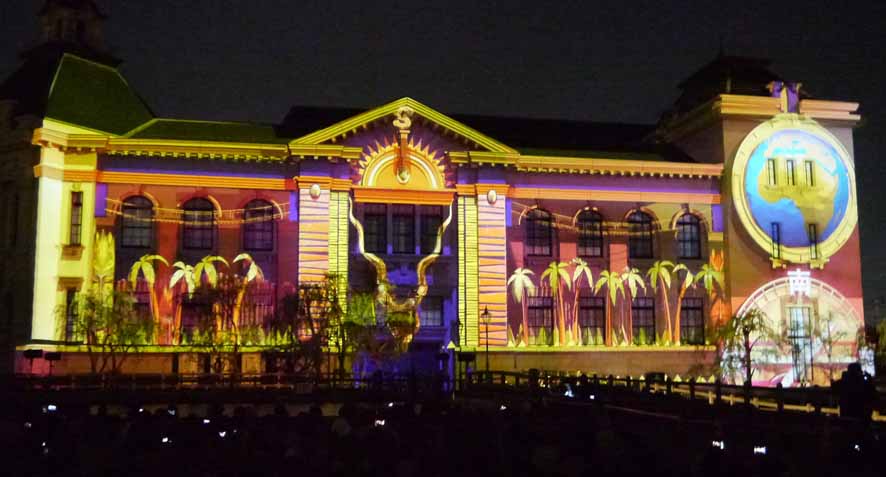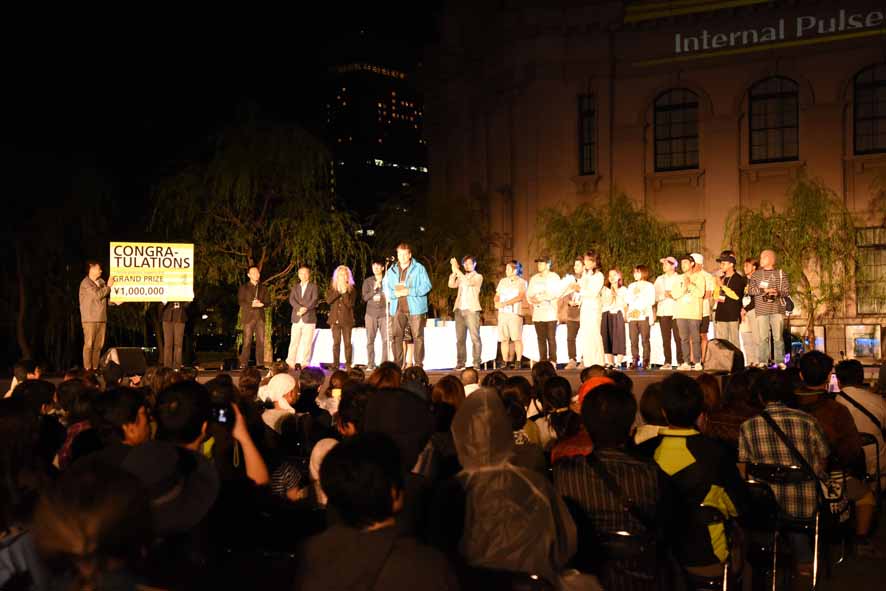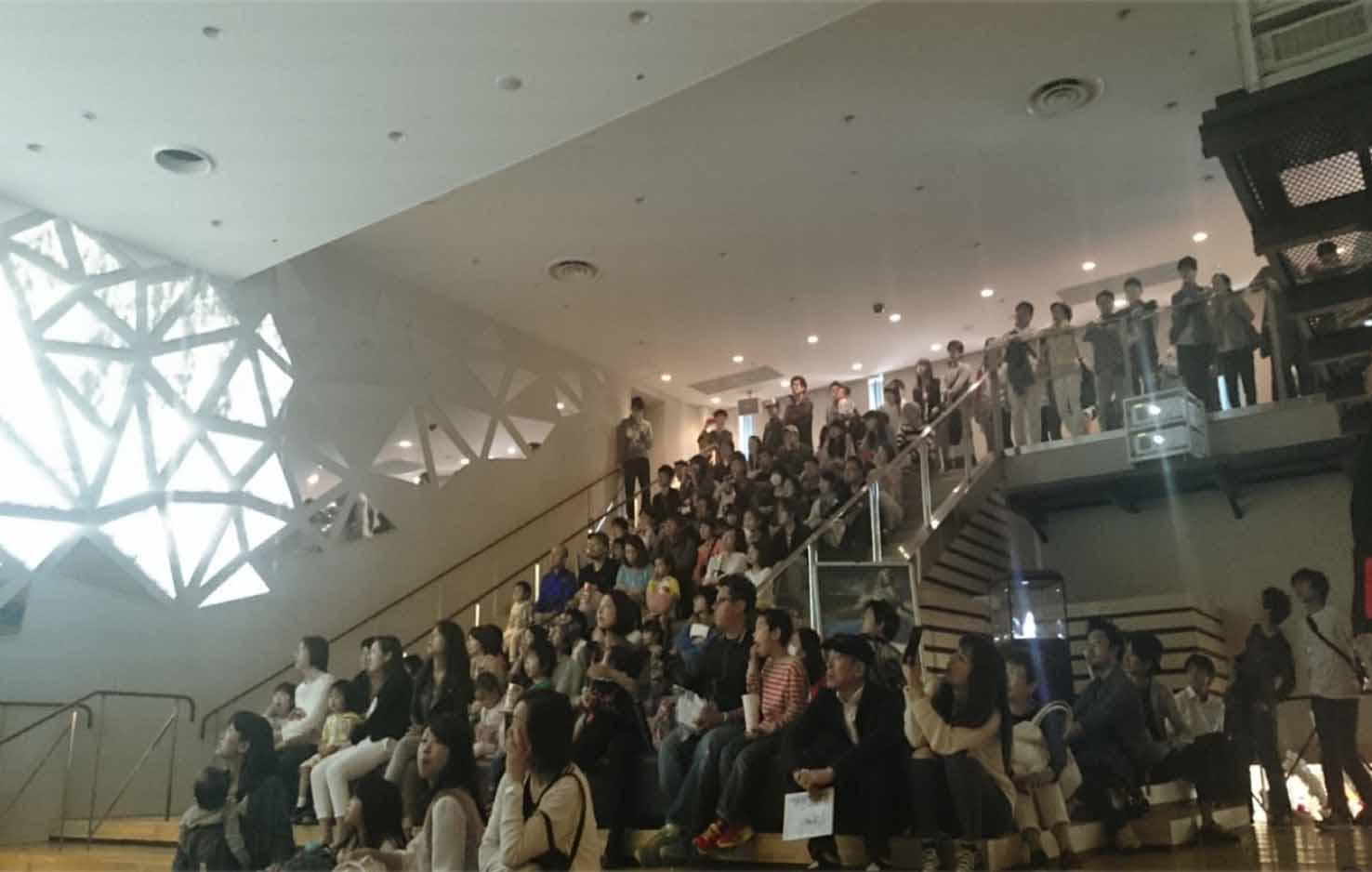Inter BEE 2018: Technical Session entitled "The Ministry of Land, Infrastructure, Transport, and Tourism-Led Deregulation of Projection Mapping"; plus, an interview with PMAJ President Ishita on "high-definition video moving from out-of-home advertising to become a part of architecture and room design"
2018.11.12 UP
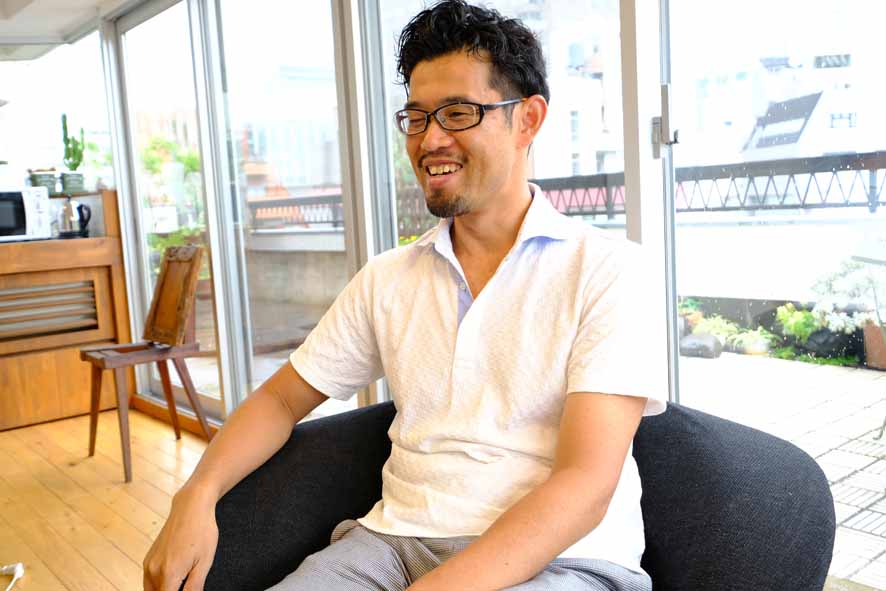
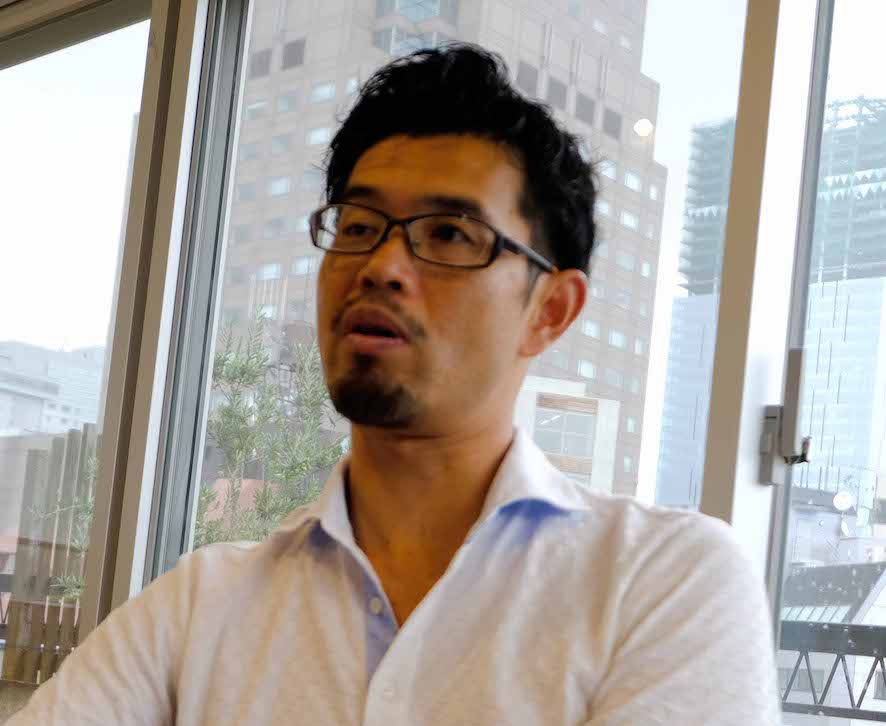
PMAJ President Ishita, who was proactive in pushing for the deregulation that the MLIT has now enacted
•Ministry of Land, Infrastructure, Transport, and Tourism finalized its handbook for projection mapping in March
On March 30th, 2018, Japan's Ministry of Land, Infrastructure, Transport, and Tourism (MLIT) set forth its Regulatory Guidelines for Projection Advertisements, which govern the use of projection mapping, and finalized its Projection Mapping Handbook, which provides businesses with information on procedures for using projection mapping and resources including the ministry's help desks. These documents will play a role in the ministry's strategy for building momentum ahead of events such as the 2020 Olympics and Paralympics and the 2019 Rugby World Cup, while also providing technical advice on issues such as how to approach projection mapping, which up to now had been handled differently by each of the country's local governments.
•Drastic deregulation, with the promotion of local development among the targets
The new guidelines state that, as a general rule, projection mapping may be used over a limited time without the need for prior approval provided that the project is in the public interest. For instance, the guidelines say that "limited-time events (such as those held in connection with the Olympics and Paralympics) that serve to stimulate the municipal economy can be held without a permit." The areas in which projection mapping is prohibited, meanwhile, are limited only to those where special consideration is warranted, such as residential zones. With regard to the places where it is permitted, the new guidelines create substantially more favorable conditions for the use of projection mapping, such as by abolishing size requirements and other restrictions in areas like business districts.
The Inter BEE Technical Session on these developments saw a panel discussion on topics including the MLIT's goals in establishing the new guidelines, points to be considered when undertaking a projection mapping project, and the changes the new guidelines will bring about.
•PMAJ President Ishita: "A big step"
One of the panelists at the discussion, Projection Mapping Association of Japan (PMAJ) President Michiyuki Ishita is among those who have actively pushed for the MLIT to relax the regulations on projection mapping. The PMAJ advocates for projection mapping in Japan, and has been proactive in extending the scope of its work to support creators both in Japan and abroad. Mr. Ishita sees the move to ease regulations as "a big step."
Last September, Inter BEE News Center's Naoki Kobayashi had the chance to hear from Mr. Ishita about subjects including the story behind the newly relaxed regulations, the goals that guide Mr. Ishita's advocacy, and what the PMAJ will be working on next.
•Deregulation will also contribute to regional revitalization
--With the MLIT's easing of regulations, it would seem that there are great expectations now on the role that projection mapping will play as we head toward 2020, but what was the situation like prior to this?
"Compared to Europe and North America, it feels like projection mapping in Japan is about 10 years behind. The bright lights of Tokyo were actually one of the main reasons for that. Also, cases in which the previous rules and regulations placed different kinds of restrictions upon projection mapping were not uncommon. Local governments tend to be very conservative, and there has also been a tendency for everyone else to get on board when one place comes out with strict regulations. The fact is that for a long time, the rules and regulations have been an obstacle."
--Do you think there will be significant changes now that the MLIT's guidelines for the newly relaxed regulations have come out?
"Yes. Ahead of the 2020 Tokyo Olympics and Paralympics, in Shibuya (one of the special wards of Tokyo), for example, a special entertainment district is being created until 2020, and the regulations on things like large billboards are being eased. There has also been a move to offer subsidies to help spur things on, so we can feel that things are moving in the right direction.
"In the MLIT's new guidelines, the help desks for the 47 administrative divisions of Japan are all listed. However, when the PMAJ looked into how many inquiries there have been since the release of the guidelines on March 30th (2018), we found that the results still aren't there in most cases. So, it seems that we need to use public places, such as the upcoming panel discussion, to raise greater awareness. I think this is also the duty of the PMAJ. I'm hoping to dig down into the next steps and how people feel about the issues by hearing from the people involved who will be getting together at Inter BEE. What they've put out here are guidelines; no more, no less. So we're going to put them into practice, and for the first time, it's going to become possible to see the indicators of their effectiveness as well as the conditions that are going to be required."
•Guidelines can also provide operational know-how
--Some of the guidelines represent a considerable shift, such as the change to allow projection mapping to be used without a permit for a limited time when it's in the public interest.
"There is a section that says, in practice, 'As long as you follow these basic rules and do it as we've described here, you can go ahead and do as you see fit, without having to consult with us.' I'm hoping that with these guidelines, the use of outdoor video and digital signage with projection mapping will become more common, and the industry will be invigorated. That being said, there are quite a few conditions in terms of the circumstances and where it can be used, so it's not as though we're free to do absolutely anything we want without any restrictions."
--There's also the new handbook. Has the PMAJ collaborated on the writing of the handbook?
"We have. In the making of the guidelines, we've had discussions with the MLIT, speaking from our experience from the work we've done thus far about real-world examples and how people are looking at the issues, such as what sorts of places were facing major obstacles, and how it would be easier if this or that part were made more lenient. It's been about three months since our first consultation. We've also presented some specific cases for their consideration."
--While it seems that one of the things that have spurred these changes on is the Olympics, the guidelines also list the help desks that are available throughout Japan.
"I think that the Tokyo Olympics have definitely been the impetus, but there have been more than a few cases in which projection mapping has produced economic benefits, so I think these changes also have the aim of stimulating regional economies. High-lumen projectors that are easy to move have come out, and it's now possible to successfully put on an outdoor event that uses video. I'm hoping that these new guidelines can become something that supports this."
--Are there any problems that regional events are facing?
"Regional events that use projection mapping are definitely effective, but at the same time, cases have emerged in which, with large gatherings of people, local governments and regional communities have seen the operational costs of things like ensuring safety and managing the traffic exceed what they're capable of handling, and that one difficult experience has kept them from carrying on with it. I think that in the guidelines we're going to have going forward, there will also be a need to present some operational know-how in order to avoid having more situations like those. For example, it's also often the case that even when adjustments are made in cooperation with the government, the police ultimately don't give permission, and that's still one of the major problems we're dealing with. We also need to be more aware that when we're doing projection mapping, we're using public property, and can't just leave it on, so I get the sense that we need to do some work to raise awareness of issues such as these. If we take the sort of approach that says, 'As long as it draws a crowd, it's great, so let's just focus on generating publicity at this point,' we could end up acting like the actual content we've created doesn't matter, and not paying any attention to how it's all handled once it's over."
•Planning with a sense of continuity will be crucial
--So, in the sense of regional revitalization, as well, one-year-only events won't be enough.
"That's right. Far from resulting in regional revitalization, it would do the opposite, and create hollowing-out. So, for those putting on the event, as well as for the government, it will be crucial to approach it all with a long-term vision.
"From the start, the idea behind our creation of the PMAJ was that we wanted to make sure projection mapping didn't end up as a fad. If you end up chasing after things like technology and novelty alone, the content won't be there. I think it's extremely important to keep supply, demand, and people in mind when you're creating something. With projection mapping, the aspect of the creators' methods of expression is also very interesting. It's an approach that has all sorts of potential. That's why we created an organization that would be an industry association that centers on creators, and that has leading from the perspective of content as one of its missions."
"When we first started out, it was a time when nobody knew what projection mapping was, so we started by trying to raise awareness of the technology itself. At the same time, in order to create a wide range of real-world examples that would be led by creators, and to produce great creative works, we also took the initiative and started doing more and more work to create actual examples of projection mapping, in a way not unlike how a business would go about its work. As we did that work, we also held international conventions, and steadily built relationships with amazing creators from Japan and beyond."
"We place a lot of importance on working with as many different kinds of creators as we can and creating a wide range of content. We work with different creators for each client. From the idea stage onward, we incorporate the creative team's ideas as we go. Always providing fresh content is something that's very important to us."
•The PMAJ's connections with the wider world
--How many creators have you built relationships with in that way?
"We now commission work from creators around the world. Between roughly 30 to 40 percent of all the work we commission is from creators outside of Japan. This may come as a surprise, but we can commission work from great creative teams overseas at prices that are quite a bit lower than what it costs to produce video in Japan, and that has led to many relationships for us. We've actually ordered work from around 10 teams overseas. Within Japan, as well, we've built a network of 20 to 30 people outside of our organization, including individuals and companies, as we've gone along. Today, we work in not only video content for projection mapping, but also interactive content, augmented and virtual reality of course, and digital signage in general. These fields are all very compatible with one another."
--When you say "outside of Japan," where do you mean?
"I really mean all over the world. We've worked with creators from Belgium, Mexico, Indonesia, France, the U.K., Ukraine, Italy, China, and more."
--That sounds interesting. What led to your making connections with them?
"Those connections have sprung from a few things. For one, I've been to various festivals and art evets overseas, and in September, I was at an international convention in Moscow, Russia as a judge. In places like those, creators from around the world get together, and I make connections with people in those situations.
"Also, we hold our own international convention in Japan every year. (The next one will be the seventh time, and will be in Miyazaki Prefecture.) Creators from around the world have submitted entries. Last year, we received 123 entries from 39 countries and regions, and those numbers will be even higher this year. There are about that many connections to be made every year (although, of course, there are creators who have entered multiple times), so when we have our convention, people come to Japan specifically for our awards, our ceremonies, our judging panel, and so on. When that happens, you get to know what they're like as people. The truth is, if we don't know that, no matter how many of their creations we've seen on the internet and so on, we can't go as far as to ask them to do work for us out of nowhere. We do that as we build a relationship in which we know each other on a personal level."
--That's great. I get the impression that normally, the award ceremony would be the end goal, and after the awards are given out, that's the end of it, but you're saying that from the award ceremony onward, you make connections with the people there, and those connections lead to work partnerships. That seems like it's good for the participants, too.
"I really do think so. I get the sense that the people who have participated in the conventions we've had so far, including those from Japan as well as those from abroad, have all stepped up to the next stage afterward."
--And by "the next stage," you mean bigger events and things like that?
"That, and also, as they're building more and more experience and more of a track record with projection mapping, they're getting more and more actual work. Apparently, some have even been asked to do major projects for big companies and national governments."
--In that sense, it seems like projection mapping still has room to grow globally.
"I think so. It's also going to be very important to work together with schools and other institutions, and increase the number of people out there who are able to create outstanding works. In China, too, there's been a movement to do projection mapping in a way that benefits the country, but there are no places where people can learn. We've had a fair number of people ask about things like whether we could provide some sort of guidance from Japan, or form alliances.
"Also, since I'm involved in this work, I've heard that people from abroad are all being told that, when they come to Japan, the first thing they should do is see me. So, I've started getting requests all the time from other countries, saying, 'I've been told about you. Would it be possible to meet? Could we do something together?'"
•Video is becoming a part of room design
--In that regard, given that you've formed an association and advised even governments, it's fair to say that even internationally, you've been a pioneer.
"Certainly, there is no association like ours in any other country. So, if various other countries and regions could create them, and we could partner with them, that could be intriguing. Just a short time ago, I went to Russia as a judge for an international convention, but I've also been invited to a large convention in Romania, and to Ukraine as a judge. We've been pretty involved with conventions around the world, and I think it would be interesting if we could extend our frameworks and have something like a network of conventions."
--To bring the conversation back to something we touched upon earlier, the goal behind the creation of the handbook was to establish rules that would allow local governments to use projection mapping more effectively in public places for purposes such as regional revitalization. How does this serve to expand the possibilities for the projection mapping industry?
"Even with the handbook, the fact is that under the current circumstances, in a lot of ways, there are significant obstacles to doing projection mapping on buildings, including budgeting, as well as working in coordination with the police and the people who run the surrounding buildings. At the same time, I think we have a good opportunity to create spaces for media that can draw people's attention to things using video, which is a subject of interest to the advertising industry.
"In addition to that, in the world of architectural design, the idea of incorporating video more as an element of architecture and interior design—including not only projection mapping, but also the use of large LED and LCD screens—has been actively taken up in the West and China. Incorporating signage as a part of room design or the design of building facades has now become a major concept, and people are looking into ways to use projection mapping within that. When that starts to happen, I think guidelines like these will actually become very important."
•What will be asked of creators who work in both room design and video production
--We're seeing things moving in the direction of video being adopted as a part of the permanent design of a building.
"That's right. Ultimately, with types of video including projection mapping being used in room design, an area of design that used to be static is now going to move, and room design itself will become a much broader area. When that happens, the question will be, 'Who can provide that?' Specialists who only produce video aren't going to really give people that impression. The creators will need to have designed real rooms, and thought about video in that context. That's where I think people who have done projection mapping and room design could really play a growing role from this point forward."
"Recently, in architecture, there have been things like building designs that change with the movement of the sun, walls that rotate and make the shadows change, and 'kinetic walls.' It looks like we're entering an era in which the people who work in video are also going to have to think about shapes that can change dynamically. From the perspectives of regional revitalization and the building of attractive regional communities, as well, I think it's going to be important to have that sort of broad outlook. Actually, we're also placing importance not on having temporary events, but on the question of how we can think long-term, starting in the early stages, as we put ideas forth. We're made proposals to people that have said, when incorporating projection mapping into the inside of a building, we should also take the model for its management into consideration, and make it something that raises profitability, rather than saying only, 'Let's just switch up the content as we go.' Instead of thinking something is finished once it's been made, it's important to think long-term about what the subsequent steps are going to be."
--Can you point to any specific examples?
"One example would be the projection mapping installed at 109Cinemas Futako-Tamagawa, which is at the Futako-Tamagawa Rise shopping complex (in southern Tokyo). In the past, what the operators would do is buy a projector after the building had been completed, change the design of the wall, and darken the area around it, but this time the projection mapping was involved from the planning stage. When that's the case, it also changes how the operators look at the costs. Normally, the installation costs are the ones that can be high enough to pose a problem, but in this instance, the costs were included in the plan from the earliest stages. By putting in art that is used for the projection mapping in place of conventional wall design elements and wallpaper, those costs could be made part of the equipment expenses. That made the whole process smoother, and we didn't have to propose anything that might have been excessive."
--Are your ideas for raising profitability things that could also be used for purposes like advertising, or bringing in audiences when promoting art?
"Yes, they are. In other settings, they can make it possible to create projects in which people come and participate directly, and they can also be adapted to work with events. Attendees can draw pictures, and those pictures can be reflected in the design of the room. That's something that could be done on a paid basis. For instance, people could pay to change the room, like using a jukebox. I think it could also be done in a way that allows people to use it in their own, custom-made ways. It doesn't just have to be pictures; you could write a message to someone, or it could be a way to propose. We've offered ideas for using projection mapping in more interactive ways like those. When it's being used for regional revitalization, in addition to the entity that has made the request, we also do research on the external factors, to make a proposal that is broader in scope."
Overview: Technical Session 1: "The Ministry of Land, Infrastructure, Transport, and Tourism-Led Deregulation of Projection Mapping"
•Location: International Conference Hall, 2nd floor, Conference Room 201 A
•Date and Time: Wednesday, November 14th, 2018, 1:00–2:30 p.m.
•Panelists
-Tomohiro Watase
Director; Landscape, History, and Cultural Environment Office; Parks, Green Spaces, and Landscape Division; Ministry of Land, Infrastructure, Transport, and Tourism
-Michiyuki Ishita
President, Projection Mapping Association of Japan
Creative Director
-Hideki Nagasaki
Managing Director, Takenaka Co., Ltd.
Representative Director, Sym-Direct Co., Ltd.
General Producer
•Moderator
-Satoshi Machida
Adviser, Projection Mapping Association of Japan
CEO and Content and Services Producer, AmbientMedia
https://www.interbee-conference.com/technical_session/



